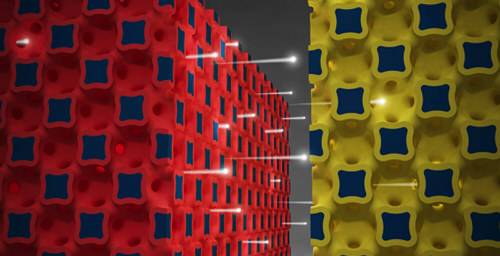
As any smartphone owner knows all too well, even the best of today’s mobile devices are completely dependent on batteries that can’t often keep up with the rest of the technology.
Even the savviest hardware makers are bumping up against the limits of what they can extract from existing battery technology. They’re forced to spend enormous efforts creating various engineering “cheats” to coax out the maximum battery life and performance for our most favored gadgets.
Despite frenzied research into both battery hardware and power-management software, the best you can say is that the industry is almost managing to keep up with the demand for more and more portable power.
10 Times Better Than Today’s Batteries
Finally, help may be on the way.
According to a recently published article in the journal Nature Communications, researchers at the University of Illinois claim to have developed lithium ion microbatteries with power densities up to “2,000 times” more powerful than comparable batteries. Or more helpfully, technology that could support batteries either 10 times smaller or 10 times more powerful than today’s typical lithium-ion batteries.
Professor William P. King, who led the university team, clearly has high hopes for the battery technology. In a statement, he said:

In recent decades, electronics have gotten small. The thinking parts of computers have gotten small. And the battery has lagged far behind. This is a microtechnology that could change all of that. Now the power source is as high-performance as the rest of it.
“You could jump-start a car with the battery in your cellphone,” the researchers crow in their report. They also claim their battery tech can be recharged 1,000 faster than today’s batteries. Put it all together and you could theoretically have a “credit-card-thin phone” that could be recharged in less than a second.
The new battery tech remains in the labs, however, although the team hopes to trial it in commercial settings later this year. If viable, it could revolutionize the market for consumer mobile electronics such as smartphone and tablets – and spur a new outpouring of innovative hardware and screen designs.
How Does It Work?
In simple terms, a chemical reaction inside a battery causes the anode to release electrons. When the battery is “on” these electrons flow from the anode to the cathode – which is on the opposite side of the battery. The University of Illinois team claims its breakthrough “integrates the anode and cathode at the microscale.” Meaning, this allows for even a very small battery to have a “very high surface area” – and thus provide far greater power density (output) and simultaneously support much faster charging.
Battery Life Is Everyone’s Problem
Battery performance continues to limit what smartphones and other mobile devices can do. Apple maintains a webpage devoted solely to helping customers improve battery life of their iPads. The company suggests users “update to the latest software,” “use your iPad regularly” and 15 other actions to boost battery life, including “let it breathe.” Seriously.
In 2012’s J.D. Power smartphone satisfaction survey, “battery life” was listed as “a significant drain on customer satisfaction and loyalty.” J.D. Power even noted that battery issues for smartphones resulted in “higher rates of merchandise returns and customer defections.”
Is It Safe?
The new microbattery could help solve those problems, if they don’t catch on fire. The BBC quoted University of Oxford chemist Peter Edwards wondering if the technology could meet the competing demands of cost, manufacturing scalability and safety:
I’d want to know if these microbatteries would be more prone to the self-combustion issues that plagued lithium-cobalt oxide batteries which we’ve seen become an issue of concern with Boeing’s Dreamliner jets.
Here’s hoping the team at Illinois, or one of the many other groups working on this problem, achieve a commercially viable – and safe – battery breakthrough soon. I hate it when my iPhone runs out of power just when I need it most.
Lead graphic representation of new battery technology courtesy of the University of Illinois.









